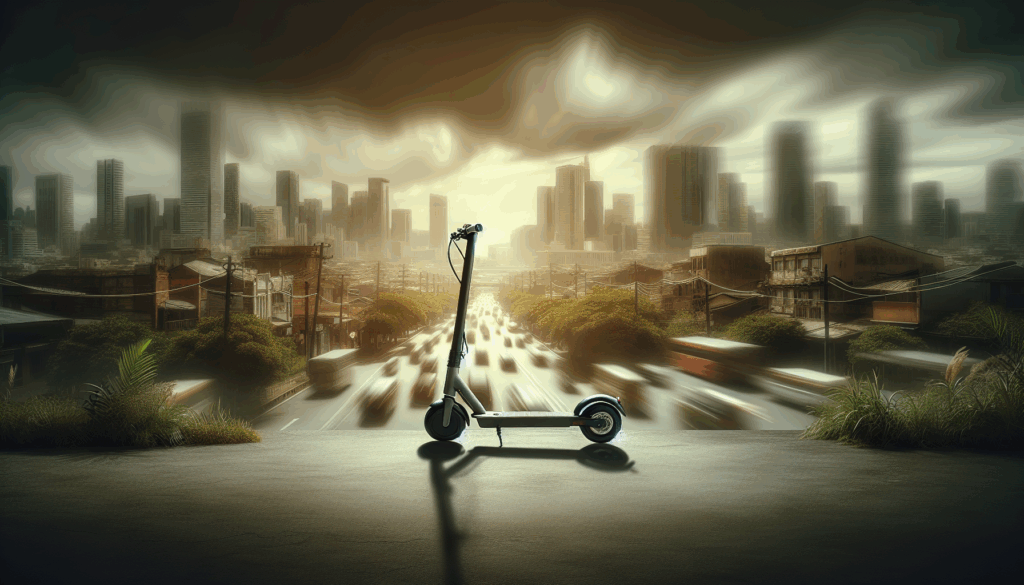Electric scooters are fantastic for navigating through cities, providing a convenient and eco-friendly way to move around. However, one common question that arises for scooter enthusiasts is whether these nifty rides can handle wet weather. Riding electric scooters in the rain is feasible, but it requires extra caution and some proactive measures. In this blog post, we’ll explore the do’s and don’ts of using electric scooters in the rain and provide 5 essential tips for riding them safely in wet weather.

Understanding the Risks
Electric scooters are designed to handle mild exposure to rain, but riders should understand their limitations when it comes to wet conditions. While most modern e-scooters come with some level of water resistance, heavy downpours can still pose significant challenges. Water can seep into sensitive electrical components, including the motor and battery housing, potentially causing short circuits or long-term damage. Additionally, rainwater on roads can create slippery surfaces, especially on painted lines, metal grates, or uneven pavements. This reduction in traction makes it easier for the tires to lose grip, which can lead to dangerous skids or falls if riders are not cautious.

Moreover, visibility becomes a major concern during rainy weather not only for the scooter rider but also for surrounding vehicles and pedestrians. Dim or diffused lighting caused by rain clouds can make it harder for others to notice an approaching electric scooter, particularly if the rider is wearing dark clothing or lacks bright reflectors. To counter these challenges, riders should equip their scooters with functional front and rear lights, wear reflective gear, and maintain a heightened sense of awareness. Understanding these risks and taking proactive safety measures can make all the difference in ensuring a safer riding experience in wet conditions.
Preparation Is Key
Before venturing out in the rain, it’s essential to prepare your electric scooter. Check that all electrical connections are tightly sealed and protected from water intrusion. Additionally, consider applying a water-resistant coating to the scooter’s components or invest in a cover to shield it from rain when parked. With proper preparation, you can minimize the impact of wet weather on your scooter’s functionality.
Choosing the Right Route
Opting for well-maintained and familiar routes can make a significant difference when riding in the rain. Avoid areas prone to flooding or debris accumulation, as these hazards can impede your scooter’s performance. Additionally, stick to roads with good drainage to reduce the risk of hydroplaning, and consider routes with ample coverage, such as tree-lined paths, to provide some shelter from the rain.

Speed Control and Braking Techniques
When it comes to riding in the rain, a conservative approach is key. Reduce your speed to allow for increased stopping distances and to minimize the risk of skidding. Be gentle with your scooter’s controls and apply brakes gradually to avoid abrupt stops, which can cause loss of traction. It’s crucial to maintain a smooth and controlled riding style in wet conditions.
Post-Ride Care and Maintenance
Once you’ve navigated the rain-soaked streets and arrived at your destination, don’t forget about your scooter’s post-ride needs. Wipe down the entire scooter to remove moisture and prevent water-related damage. Ensure that all electrical connections remain dry and moisture-free. Finally, give your scooter a quick once-over to proactively identify and address any signs of water damage.

Conclusion: Embracing Wet Rides: A Prelude to Safeguarding Your Scooter and Yourself
The allure of riding electric scooters through rain-swept streets is undeniable, and with the right precautions, it can be done safely. Understanding the risks, preparing your scooter, choosing suitable routes, controlling your speed and braking, and administering post-ride care are crucial steps in ensuring a smooth and secure wet-weather ride. By implementing these tips, you can confidently navigate through rainy conditions while safeguarding your scooter and yourself.
